Traditional embroidery is a timeless art form that weaves a colorful tapestry of history, culture, and craftsmanship.
Across the globe, diverse communities have cultivated unique techniques, passed down through generations, to embellish fabrics with intricate designs.
From the vivid Hmong embroidery of Southeast Asia to the delicate Chinese silk embroidery, each tradition tells a story of its people, bearing witness to their customs, values, and creativity.
This age-old craft extends beyond mere decoration; it encapsulates a profound connection to heritage.
In this exploration, we delve into the rich and fascinating world of traditional embroidery, uncovering the threads that connect past and present, form and function, beauty and tradition.
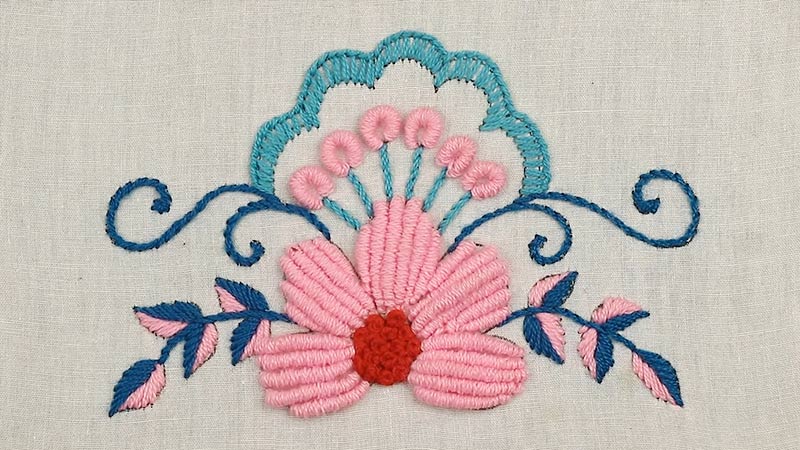
What Are the Traditional Embroidery?
Traditional embroidery refers to the time-honored art of decorating fabric or other materials with needle and thread. It is a craft that has been practiced for centuries in various cultures around the world.
Traditional embroidery techniques vary widely from region to region, and they often reflect the history, customs, and artistic preferences of the people who developed them.
Here are some examples of traditional embroidery techniques from different parts of the world:
1. Crewel Embroidery (India and Kashmir)
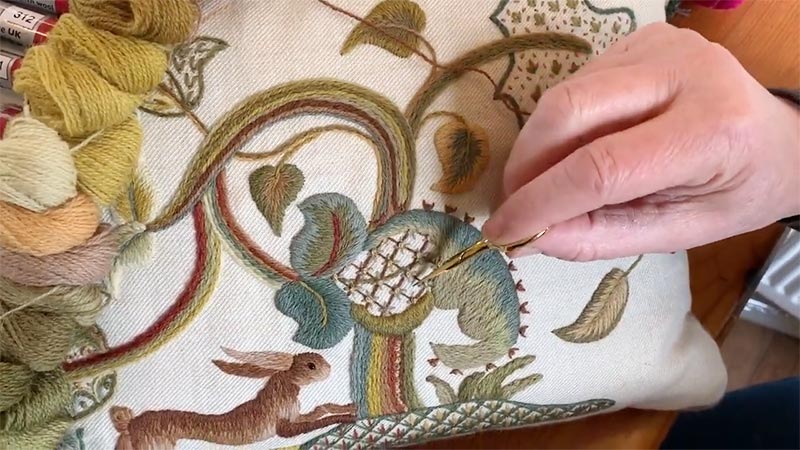
Crewel embroidery has its roots in India and is particularly associated with the beautiful region of Kashmir.
This form of embroidery primarily utilizes wool threads to create intricate and colorful designs.
Crewel’s work often features graceful floral patterns, intricate vines, and the iconic paisley motif, with designs that are inspired by the stunning landscapes and gardens of the region.
It’s not just a form of decoration but also serves functional purposes, such as on shawls and other textiles.
2. Cross-Stitch (Europe)
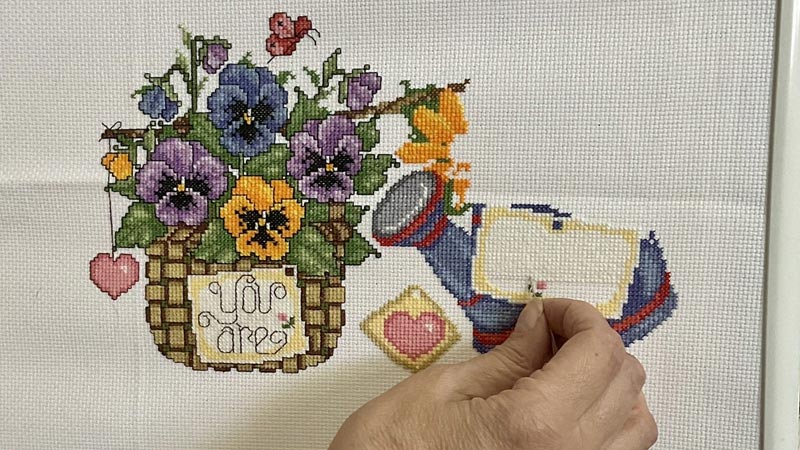
Cross-stitch is a widely practiced form of embroidery in Europe, with a rich history that can be traced back to the Middle Ages. It involves the use of X-shaped stitches to form patterns on fabric.
Cross-stitch patterns can be quite diverse, including religious motifs, decorative samplers, and intricate designs for clothing and household items. It’s valued for its precise, grid-like appearance.
3. Hmong Embroidery (Southeast Asia)
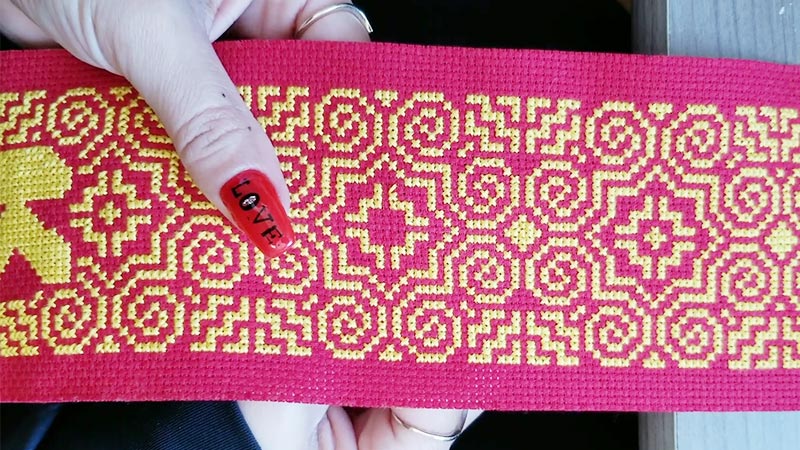
The Hmong people, primarily residing in Laos, Thailand, and Vietnam, are known for their unique and vibrant embroidery.
Hmong embroidery often features bold geometric patterns and intricate motifs, with each design telling a story or conveying cultural symbolism.
This craft is deeply intertwined with their cultural heritage, often seen in traditional clothing.
4. Japanese Sashiko (Japan)
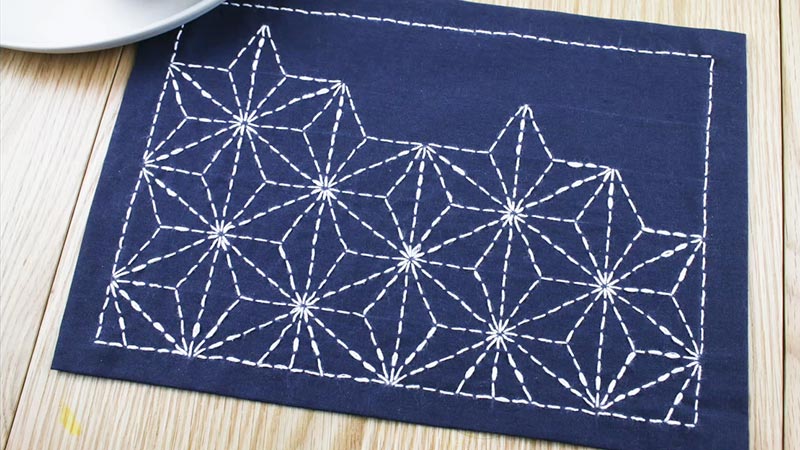
Sashiko is a Japanese embroidery technique with roots in functional stitching. It involves using white thread on indigo fabric to create simple, yet elegant patterns.
Sashiko stitching was initially used for reinforcing and mending garments, giving them a beautiful and distinctive look. Common patterns include simple geometric shapes and nature-inspired motifs.
5. Mexican Otomi Embroidery (Mexico)
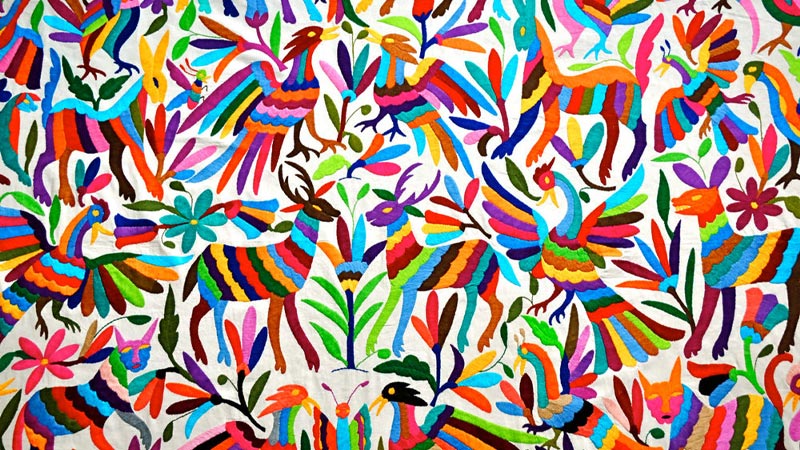
Otomi embroidery originates from the indigenous Otomi people of central Mexico. It’s renowned for its intricate and colorful depictions of animals, plants, and mythological creatures.
These vibrant designs are typically embroidered on white or natural-colored fabric, creating a striking contrast that captures the essence of Mexican culture and traditions.
6. Chinese Silk Embroidery (China)
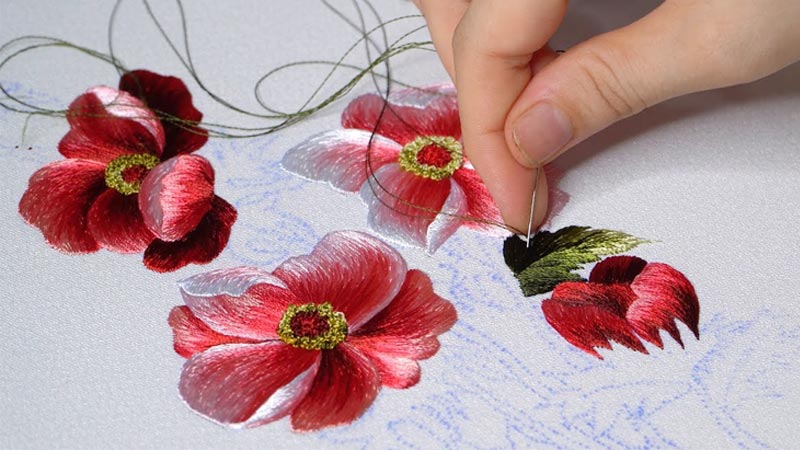
China has a rich history of silk embroidery that dates back thousands of years. This embroidery is characterized by its exquisite craftsmanship and intricate detail.
Common motifs include dragons, phoenixes, flowers, and birds. Chinese silk embroidery is not only a form of art but also holds profound cultural significance, often used to create intricate garments and tapestries.
7. Swedish Hardanger (Sweden)
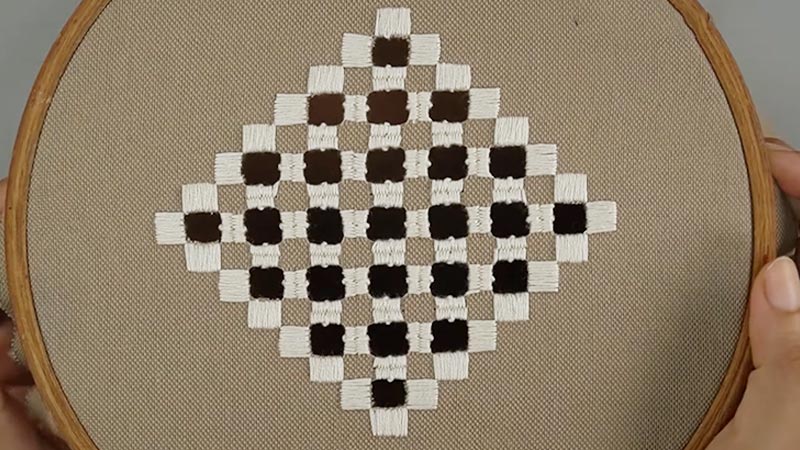
Hardanger embroidery, originally from Norway but popular in Sweden, is a counted thread and drawn thread technique.
It involves creating lacy, geometric patterns through precise counting and the removal of specific threads.
The result is delicate, ornate designs that are commonly used for table linens and decorative textiles.
8. Brazilian Embroidery (Brazil)
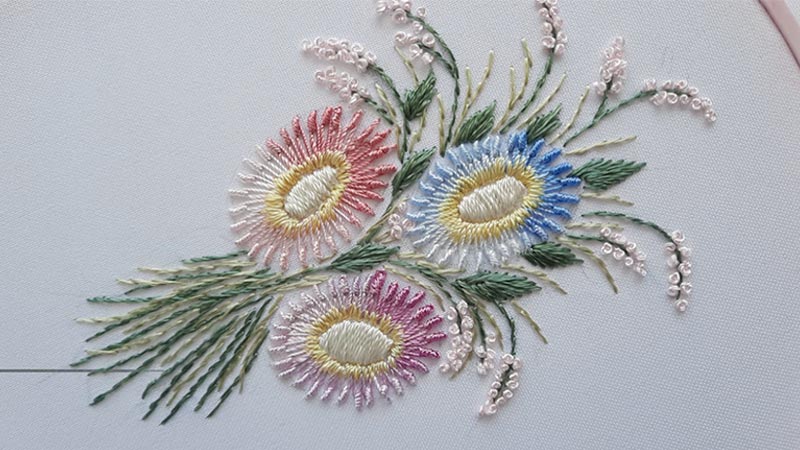
Brazilian embroidery is particularly prominent in the northeastern regions of Brazil. This style is known for its richly textured stitches and vibrant colors.
The embroidery often features three-dimensional floral and botanical designs, creating a tactile and visually appealing effect that’s unique to Brazil.
9. Palestinian Tatreez (Palestine)
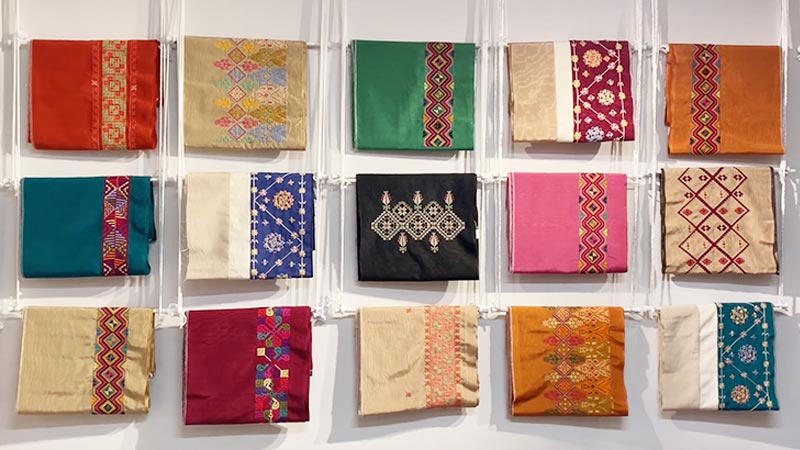
Tatreez is a traditional form of Palestinian embroidery, often found on garments and accessories.
It’s characterized by intricate cross-stitch patterns and motifs that carry cultural and symbolic significance.
Each motif and color combination can convey different meanings and stories, making Tatreez a powerful tool for preserving Palestinian heritage and identity.
Influence of Traditional Embroidery
The influence of traditional embroidery on culture, art, and fashion is profound and far-reaching. This time-honored craft, practiced by diverse communities worldwide, has left an indelible mark on various aspects of human expression.
Here are some ways in which traditional embroidery has made its influence felt:
Cultural Preservation
Traditional embroidery serves as a living testament to a culture’s history, customs, and values. These embroidered pieces often incorporate symbols and motifs that hold deep cultural and spiritual significance.
In this way, embroidery becomes a vehicle for preserving and passing down the unique narratives and traditions of a community. It ensures that the stories of the past are not lost and remain an integral part of a culture’s identity.
Art and Aesthetics
Traditional embroidery has inspired artists and designers across various creative disciplines. The meticulous craftsmanship, intricate patterns, and vibrant colors found in embroidery have been a source of artistic inspiration for centuries.
Embroidery has not only influenced visual art but has also been integrated into sculpture, textiles, and contemporary crafts, contributing to a rich tapestry of artistic expression.
Fashion
Embroidery has a profound impact on the world of fashion. Many fashion designers draw upon traditional embroidery techniques to create clothing that honors heritage while staying relevant in the modern world.
From intricate hand-embroidered wedding dresses to embroidered denim jackets, these designs showcase the versatility of traditional embroidery and its ability to transcend cultural boundaries.
Textile Industry
Traditional embroidery techniques have often influenced the textile industry. Modern technology has embraced the precision and intricate detail of hand-embroidered textiles.
Computerized embroidery machines are now used to replicate the beauty of hand-stitched embroidery, making it more accessible for mass production. This blend of tradition and technology has revolutionized the textile and fashion industries.
Global Exchange
As the world becomes more interconnected, traditional embroidery styles are no longer confined to their regions of origin.
Cultural exchange and globalization have led to the fusion of different embroidery traditions, giving rise to innovative, hybrid designs that combine elements from various cultures.
This cross-cultural pollination enriches the art form and fosters appreciation for global diversity.
Economic Empowerment
In many regions, traditional embroidery is a source of income and economic empowerment. Local artisans and craftswomen often rely on the sale of embroidered products to support their families and communities.
This economic independence not only improves their quality of life but also contributes to social stability and well-being in the regions where embroidery is practiced.
Education and Skills Transfer
The transmission of traditional embroidery from one generation to the next is a vital aspect of cultural preservation.
These skills are typically taught within families, communities, and, in some cases, through formal educational programs.
By ensuring that younger generations learn these techniques, traditional embroidery continues to thrive and adapt to changing times.
Tourism and Cultural Promotion
Traditional embroidery is a significant draw for tourists interested in immersing themselves in local cultures.
It is often featured in museums, cultural festivals, and craft exhibitions, becoming a crucial component of a region’s cultural identity.
This not only generates tourism revenue but also fosters understanding and appreciation of different cultures.
Empowerment of Women
In many societies, women have played a central role in the practice of traditional embroidery. This has led to the empowerment of women, offering them a means of income and financial independence.
Women’s cooperatives and entrepreneurial initiatives centered around embroidery are now common in various parts of the world, giving women a platform to showcase their skills and creativity.
Diplomacy and Soft Power
Traditional embroidered textiles often play a role in diplomacy and soft power. Gifts of hand-embroidered items are exchanged between nations as symbols of goodwill and cultural exchange.
These exchanges help to build cultural bridges and foster international relationships by showcasing the artistry and craftsmanship of the gifting nation.
How has Modern Technology Impacted Traditional Embroidery Techniques?
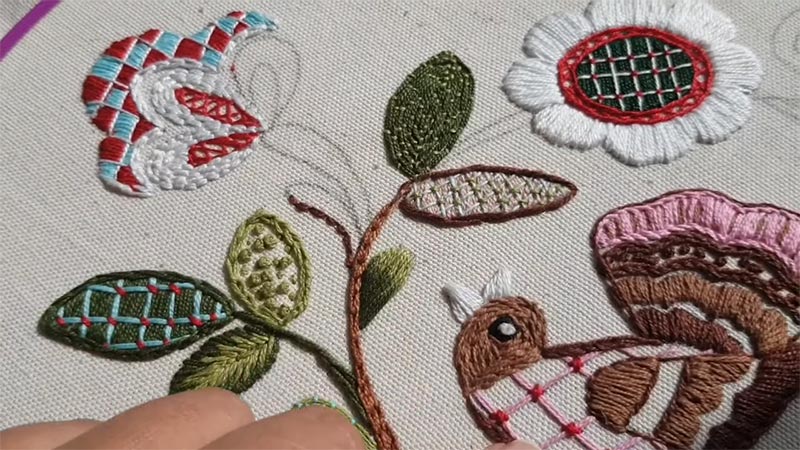
Modern technology has significantly impacted traditional embroidery techniques, revolutionizing the art form and expanding its possibilities.
While traditional embroidery remains deeply rooted in culture and heritage, technological advancements have introduced new tools and methods that enhance both the production and preservation of this timeless craft.
Here are some key ways in which modern technology has influenced traditional embroidery:
Computerized Embroidery Machines
One of the most prominent innovations in traditional embroidery is the introduction of computerized embroidery machines.
These machines use digital designs and precise stitching patterns to replicate intricate hand-embroidered patterns quickly and accurately.
This technology has made it possible to produce intricate embroidery on a mass scale, reducing the time and labor required for large-scale projects.
Design Software
Modern design software allows artisans and designers to create and modify embroidery patterns with unprecedented precision.
These software tools facilitate the development of intricate and complex designs, making it easier to translate creative ideas into tangible embroidered artwork.
Digital Printing
Traditional embroidery can now be combined with digital printing techniques, allowing for vibrant and intricate designs that seamlessly blend with embroidered elements.
This fusion of traditional and digital methods has opened up new avenues for creative expression and innovative design possibilities.
LED Lighting and Magnification
LED lighting and magnification tools have improved the accuracy and ease of intricate embroidery work.
Artisans can now work on detailed projects with better visibility, reducing eyestrain and enhancing the quality of their craftsmanship.
Global Access to Information
The internet has provided artisans with access to a vast array of information, tutorials, and resources related to traditional embroidery techniques.
Online communities, forums, and video tutorials have enabled artisans to learn from experts and share their own knowledge, helping to preserve and promote traditional embroidery skills.
Sustainable Practices
Technology has also played a role in advancing sustainable and eco-friendly embroidery practices.
Artisans are increasingly using organic fabrics, natural dyes, and environmentally responsible materials to create their embroidered pieces, aligning with modern concerns about environmental conservation.
Enhanced Communication
Modern technology has facilitated communication and collaboration among artisans, designers, and enthusiasts worldwide.
Traditional embroidery styles and techniques from different cultures can now be easily shared, studied, and appreciated on a global scale, fostering a greater cross-cultural understanding.
Market Access
The Internet and e-commerce platforms have provided artisans and traditional embroidery practitioners with greater access to global markets.
They can showcase and sell their work to a broader audience, helping to sustain their craft and generate income.
Archiving and Preservation
Digital technology has made it possible to document and archive traditional embroidery patterns and techniques for future generations.
Online databases and digital libraries ensure that these intricate and culturally significant designs are preserved and accessible to a wider audience.
FAQS
What are the origins of traditional embroidery in Africa?
Traditional embroidery in Africa is a diverse art form with origins dating back centuries.
Various regions of Africa have their unique styles and techniques, such as Aso Oke embroidery in Nigeria and Lesotho’s distinctive patterns and motifs.
Do traditional embroidery techniques vary between urban and rural areas within a culture?
Yes, traditional embroidery can vary even within a single culture. In some cases, urban areas may adapt traditional techniques to more contemporary styles, while rural regions often preserve older, more traditional methods.
Are there any environmental concerns associated with traditional embroidery?
Traditional embroidery can sometimes use materials that have environmental implications, such as chemical dyes.
However, there is a growing movement toward sustainable and eco-friendly practices, with artisans using natural dyes and organic fabrics in their embroidery work.
Are there specific rules or customs associated with the colors used in traditional embroidery?
Yes, many traditional embroidery styles have customs regarding color symbolism.
For instance, red may symbolize good luck and prosperity in Chinese embroidery, while white often represents purity and peace in various cultures.
To Recap
Traditional embroidery is a rich tapestry that threads together culture, history, and art. Its influence extends far beyond the realms of design and aesthetics, shaping the identity of communities and leaving an indelible mark on fashion, textiles, and artistic expression.
These intricate stitches carry stories, symbolism, and the legacy of generations. Through a symphony of colors, patterns, and techniques, traditional embroidery bridges the past with the present, breathing life into the customs and values of diverse cultures.
It’s a testament to the enduring beauty of human creativity and craftsmanship, inspiring artists, fostering economic empowerment, and preserving cultural heritage for the future.
Traditional embroidery is more than just a craft; it’s a living legacy and a vibrant thread in the tapestry of our world.
Leave a Reply